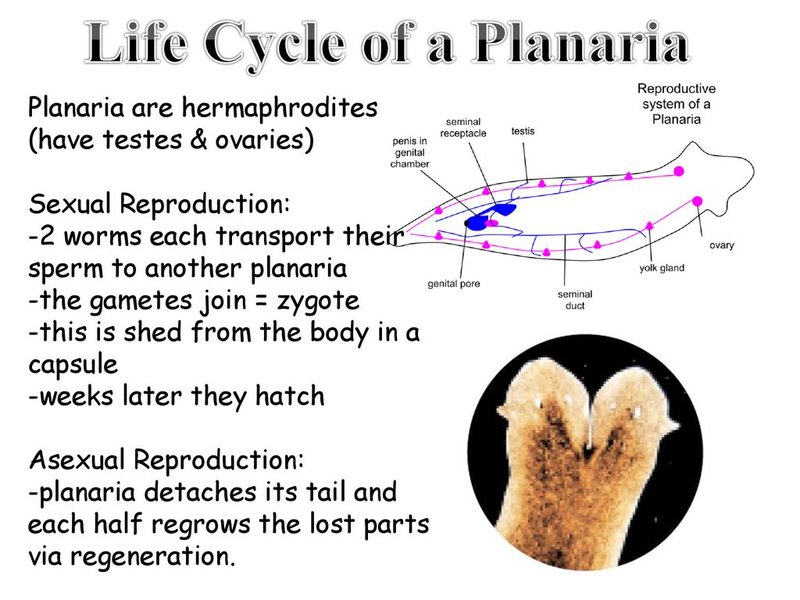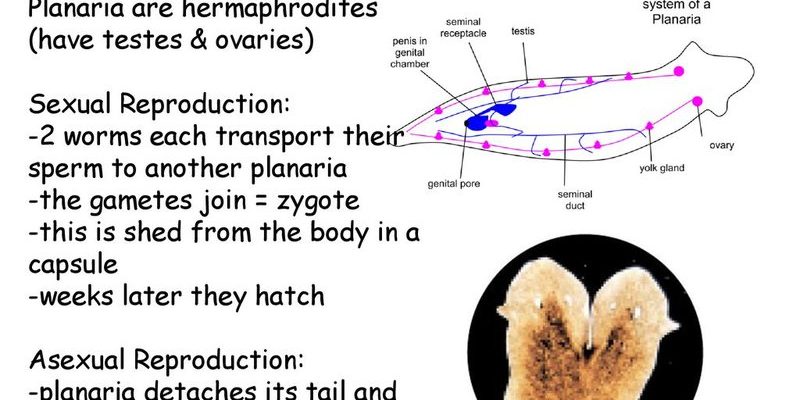
Planaria belong to a group of flatworms known as Turbellaria. They are known for their remarkable regenerative abilities—seriously, if you chop one in half, each half can grow into a new worm! This is just one of the many intriguing aspects of their life cycle. Understanding the life cycle of the planaria can help unravel the secrets of these little creatures and why they play such a vital role in their ecosystems. So, let’s dive into the fascinating journey of a planaria, exploring the various stages of development and their unique behaviors along the way.
The Basics of Planaria
Before we jump into the life cycle, it’s good to get a feel for what planaria really are. Picture a flat, soft-bodied worm gliding through water with a somewhat triangular head and two eyespots that resemble tiny buttons. These creatures range from a few millimeters to several centimeters in length. They usually come in shades of brown, black, or even sometimes vibrant colors, depending on their environment. Honestly, they can be pretty mesmerizing to watch!
Planaria are mostly found in freshwater habitats, but they can also be seen in damp terrestrial environments. They thrive in places with plentiful organic material, such as decaying leaves or other decomposing matter. This makes them essential players in their ecosystems because they help break down organic matter and recycle nutrients back into the water. Think of them as the cleanup crew of the aquatic world.
Life Cycle Stages of Planaria
The life cycle of planaria can be broken down into several stages: egg, juvenile, adult, and reproductive phase. Each stage is vital for the growth and continuation of the species.
1. The Egg Stage
Planaria begin their journey as tiny eggs. The female planaria lays hundreds of eggs in clusters, which look like little clear jelly drops. These eggs are often attached to aquatic plants or submerged rocks, offering them some protection. You might be wondering how long it takes for them to hatch. Well, under the right conditions, it usually takes about two weeks for those eggs to develop into little planarians.
During this time, the eggs undergo a transformation, slowly developing organs and structures necessary for their survival. It’s like watching a tiny miracle happen under water. Once hatched, the baby planaria—which look like miniature versions of their adult counterparts—are ready to start their journey into the world.
2. The Juvenile Stage
After hatching, planaria enter their juvenile stage, where they spend their time growing and learning about their environment. At this point, they’re still quite small, measuring only a few millimeters. Juvenile planaria are very active and tend to explore their surroundings more than their adult counterparts.
During this stage, they feed on bacteria, protozoa, and bits of decaying organic matter. It’s all about making connections and understanding their habitat. If you’ve ever watched a puppy learning about its new home, you can picture what these young planaria are doing—navigating around, tasting new things, and occasionally bumping into obstacles, just figuring life out.
3. The Adult Stage
Once juvenile planaria hit about 2-3 centimeters in length, they transition into adulthood. In this stage, they become fully mature and develop the ability to reproduce. An adult planaria has a flat body with a well-developed head and gives off a sense of confidence as it glides through the water.
What’s fascinating here is that planaria are hermaphroditic, meaning each individual has both male and female reproductive organs. This gives them a unique advantage in nature; they don’t need to find a mate to reproduce. When conditions are right, they can reproduce asexually through a process called fission, where they split into two, or engage in sexual reproduction with other planaria. Talk about efficient!
4. The Behavior of Planaria
So, now that we’ve covered the life stages, let’s talk about their behavior. Planaria are not just passive little creatures; they showcase some remarkable behaviors. They have a simple nervous system that allows them to respond to their environment effectively.
For example, they exhibit a behavior called “negatively phototactic,” which means they tend to move away from light. Imagine wandering into a bright room and instinctively retreating towards the shadows; that’s how planaria act. This behavior helps them avoid predators and find shelter in safe, dark environments.
Additionally, planaria have a surprisingly keen sense of taste and can even learn from experience. Experiments have shown that they can respond to cues in their environment, adapting their behaviors for feeding and survival. You might even say they have a bit of personality!
Regeneration: A Marvel of Nature
One of the standout traits of planaria is their incredible regenerative ability. If they lose a part of their body—like a tail—they can regenerate it over time. This process isn’t just about fixing a wound; it involves complex biological mechanisms that allow them to grow new cells and tissues.
When a planaria is cut, it sends signals to its body to kickstart regeneration. New cells start to form, and within weeks, that lost part can grow back. This ability is not only fascinating from a biological standpoint but also helps scientists study regeneration to understand how it works in more complex organisms.
Planaria’s regenerative power is so remarkable that they’ve become a model organism in scientific research, shedding light on potential applications in medicine.
Environmental Impact and Importance
Given their role in breaking down organic matter and recycling nutrients, planaria impact their aquatic ecosystems significantly. They serve as a food source for various fish and larger invertebrates. If you think of them as a cute, unassuming part of the food web, their presence is crucial for maintaining balance in the ecosystem.
Furthermore, studying planaria helps scientists better understand broader ecological concepts, including biodiversity and ecosystem health. They’re like the unsung heroes of the freshwater habitat, ensuring everything works in harmony.
The life cycle of planaria is not just a simple tale of growth and reproduction; it’s a fascinating journey full of survival tactics and remarkable abilities. From tiny eggs to regenerative adults, these creatures showcase the beauty of nature’s design. Their behaviors remind us that even the smallest organisms play vital roles in our ecosystems.
So, next time you glance at a pond or stream, remember the little planaria swimming beneath the surface. They might just be the quiet champions of that watery world, working diligently to sustain life. Whether you’re a budding naturalist or just someone with a casual interest in aquatic life, understanding planaria is like unlocking a treasure chest of ecological knowledge—one tiny flatworm at a time!

